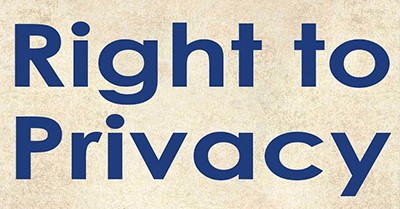As early childhood services increasingly consider CCTV to bolster child safety and meet compliance expectations, the discussion around surveillance is expanding beyond regulation into ethics, dignity, and children's rights. At the heart of this conversation lies one critical question: When does safeguarding begin to encroach on the very privacy it aims to protect?
Consent: Who Speaks for the Child?
Children cannot legally give informed consent to being filmed. In early childhood settings, this responsibility belongs to their parents or legal guardians. Under the Privacy Act 1988 and the Australian Privacy Principles (APPs), video recordings are considered personal information, and families must be:
- Informed about where cameras are located
- Made aware of why footage is captured
- Told how long it’s stored and who can access it
Best practice demands that services obtain written parental consent, disclose CCTV use through policies and enrolment documents, and clearly display signage throughout monitored areas.
But consent alone doesn’t equal comfort. For children, who may not grasp the concept of surveillance, there’s a need to translate safeguarding into safety—not suspicion.
Do Children Need Permission to Be Filmed?
In Australia, children cannot legally give informed consent to being filmed. Instead:
- Parental or guardian consent is required before recording or photographing children, especially in childcare settings.
- In group settings (like classrooms or early learning centres), confirmation of prior consent must be obtained from a senior educator or director.
- CCTV footage is considered personal information under the Privacy Act 1988 and must be handled according to the Australian Privacy Principles (APPs).
Even when not legally required, best practice includes:
- Including CCTV policies in enrolment forms and family handbooks.
- Displaying clear signage at all entrances and monitored areas.
- Informing families how footage is stored, accessed, and deleted.
The Line Between Protection and Privacy: Toileting & Nappy Changes
According to Regulation 155 of the Education and Care Services National Regulations, services must ensure children's dignity and rights are respected at all times. This is non-negotiable during intimate care routines.
CCTV cameras must never be installed in:
- Toileting areas
- Nappy change stations
- Bathrooms or dressing spaces
- Sleep rooms (unless strict privacy safeguards are documented)
Surveillance in these areas not only breaches privacy laws—it risks traumatising children and undermining trust between families and educators.
Children’s Right to Privacy During Toileting & Nappy Changes
Australian regulations are explicit about protecting children’s dignity during intimate care:
- CCTV must not be installed in bathrooms, nappy change areas, or sleep rooms.
- The Education and Care Services National Regulations (r.155) require that children’s dignity and rights are maintained at all times, especially during toileting and nappy changes.
- Children have the right to privacy, respect, and agency during these routines — educators are expected to explain what’s happening and involve children in the process.
Services must:
- Design nappy change areas to allow supervision without surveillance, such as open doors or internal windows.
- Use Four Eyes Policies (e.g. two adults present or visible) to safeguard children and educators without compromising privacy.
- Ensure no recording devices (including phones or cameras) are used in sensitive areas
Best Practice Summary
|
Area |
CCTV Allowed? |
Consent Needed? |
Privacy Considerations |
|---|---|---|---|
|
Entry, reception, hallways |
Yes |
Recommended |
Visible signage required |
|
Toileting & nappy change areas |
No |
Not permitted |
Must uphold dignity & privacy |
|
Sleep rooms |
Sometimes |
Recommended |
Only with staff consultation & safeguards |
Ethical Oversight and Trauma-Informed Practice
Childcare services adopting CCTV should do so as part of a multi-layered safeguarding strategy, not a surveillance-first approach. That means:
- Consulting educators on placement and purpose
- Building trust with families through transparency
- Using trauma-informed language in CCTV policies
- Restricting footage access to authorised personnel only
- Developing breach protocols to prevent data misuse
Educators play a pivotal role in upholding children’s emotional safety. CCTV must never replace qualified supervision, responsive relationships, or reflective practice.
Leading with Dignity
For childcare leaders and educators, the message is clear: technology can support safety, but it must never substitute compassionate, human-centred care. Surveillance may help reveal wrongdoing—but it cannot nurture trust.
By embedding privacy, informed consent, and ethical monitoring into daily routines, Australian early learning centres can protect children not only from harm but also from being unseen, unheard, and unprotected in their right to be safe and dignified.
Further Reading
CCTV Cameras To Be Installed In Early Childhood Services
“Kindy Cops” and Cameras
G8 Education to Roll Out CCTV
Affinity Follows G8 Footsteps With CCTV Cameras
References:
Understanding Privacy Laws: CCTV Usage in Australian Childcare Centres
Toileting and Nappy Changing Policies and Practices
States Consider Mandating CCTV In Childcare Centres But Experts Say It’s A Knee-jerk Response
